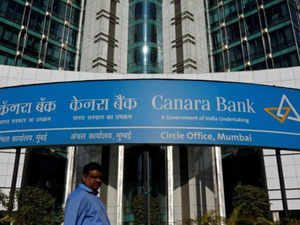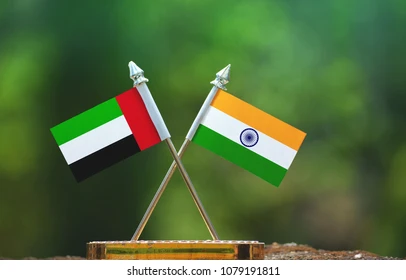Welcome to Daily Banking Digest, your premier source for the latest news and insights on February 14, 2024, focusing on banking, the economy, and finance. Our platform offers a comprehensive overview of the day’s most critical financial stories, market trends, and economic developments. Whether you’re a professional in the financial sector, an investor monitoring market movements, or someone interested in staying informed about the economic landscape, Daily Banking Digest provides reliable, up-to-date information.
Download PDF From Here
Table of Contents
Canara Bank raises Rs 2,000 crore in capital through Tier-I bonds.
Canara Bank, a public sector lender, has successfully raised Rs 2,000 crore in capital through Tier I bonds at a coupon rate of 8.40% to fulfil regulatory requirements and support its growth initiatives. Initially aiming for Rs 500 crore, the bank leveraged a green shoe option to extend the total issue size to Rs 2,000 crore, backed by a “AA+” rating from ICRA with a stable outlook. The issue saw significant interest, receiving bids around Rs 2,500 crore, indicating strong investor confidence. The coupon rate set by Canara Bank was marginally higher than that of the State Bank of India (SBI), reflecting its market positioning and the premium associated with SBI’s systemic importance.

Key Points:
- Canara Bank’s capital raise was through Tier I bonds with an 8.40% coupon rate, totaling Rs 2,000 crore.
- The issue was well-received, with bids surpassing the target, highlighting robust market interest.
- The coupon rate was competitively priced, slightly above SBI’s, underscoring Canara Bank’s strategic market placement.
- This capital infusion aims to meet regulatory standards and bolster the bank’s growth trajectory.
- SBI had previously raised Rs 5,000 crore at a slightly lower rate, amidst tight market conditions.
- Post the monetary policy review, market yields softened, impacting bond and capital market dynamics.
- Canara Bank’s Capital Adequacy Ratio (CAR) as of December 2023 stood strong, indicating a healthy capital buffer.
- ICRA anticipates Canara Bank to be self-reliant in meeting its capital needs, including managing potential stress and growth requirements, while monitoring the impact of transitioning to an Expected Credit Loss (ECL) framework on its capital and profitability
Wait for IDBI Bank divestment could stretch further.
The process of strategic disinvestment for IDBI Bank is expected to face delays and may not be completed within the first half of the next fiscal year, according to DIPAM Secretary Tuhin Kanta Pandey. Complexities such as due diligence and financial bidding contribute to this delay. Conversely, the disinvestment of the Shipping Corporation of India is anticipated to conclude within the same period. Although there’s no set disinvestment target for the fiscal year 2025, the government has earmarked ₹50,000 crore for managing equity investments and public assets.

Key Points:
- The strategic disinvestment of IDBI Bank is not expected to complete in the first half of the next fiscal year due to detailed processes yet to be undertaken.
- LIC and the government, holding 49.24% and 45.48% in IDBI Bank respectively, are looking to sell a combined 60.72% stake with management control transfer.
- There are regulatory examinations ongoing regarding the ‘fit and proper’ status for potential bidders, which must be resolved before financial bidding can proceed.
- DIPAM experienced delays in appointing an asset valuer for IDBI Bank, with key dates for bid submissions and presentations still pending.
- The strategic disinvestment of the Shipping Corporation of India appears on track, with expected completion in the first half of the next fiscal year following recent progress with the Maharashtra Government and land lease adjustments.
- No immediate new bids are planned for selling Pawan Hans and Central Electronics Ltd, while the sale of HLL Lifecare Ltd is nearing completion.
- The Finance Ministry has forecasted ₹50,000 crore in revenue from various mechanisms related to public asset management for FY25.
Govt looking at expanding rice classification to limit export curbs.
The Commerce and Industry Ministry of India is considering expanding the classification codes for rice, specifically the Harmonized System Nomenclature (HSN codes), to distinguish between various non-basmati rice varieties. This would allow certain types of non-basmati rice that are not commonly consumed domestically to be exempted from export restrictions, should such restrictions be applied to the mainstream non-basmati white rice. The government is currently in a consultation phase, ensuring that the interests of stakeholders, like farmers, are taken into account before making any decisions. There’s an ongoing ban on all non-basmati white rice exports.
Key Points:
- Proposal to create additional HSN codes for non-basmati rice to differentiate varieties and manage export bans more effectively.
- Decision-making will be preceded by extensive consultations to consider the interests of farmers and other stakeholders.
- Only six HSN codes currently exist for non-basmati rice, although India grows 30-40 varieties.
- APEDA is working on creating separate HSN codes for GI-tagged rice varieties, such as red, black, and kalanamak rice.
- India’s agricultural exports are expected to decline by 9% this year due to export restrictions on rice, sugar, and wheat.
- The Red Sea crisis may impact basmati rice exports to the EU and Egypt, but exports to West Asia are likely to continue unaffected.
Equal access. Personal guarantors’ insolvency: IBBI mandates Resolution Professionals to provide reports to both debtor and creditor for enhanced transparency.
The Insolvency and Bankruptcy Board of India (IBBI) has introduced a measure to improve transparency in the insolvency resolution process for personal guarantors. Resolution Professionals (RPs) are now required to share their report with both the creditor and the debtor in every case. This change aims to facilitate better-informed decisions by ensuring that all parties are aware of the evaluations and recommendations made by the RP. Previously, RPs were only obligated to provide their report to the party who initiated the insolvency proceedings, leaving the other party without this information.

Key Points:
- IBBI’s new regulation mandates RPs to share their resolution report with both creditors and debtors to foster transparency.
- The move aligns with the Insolvency and Bankruptcy Code’s (IBC) goal of balancing the interests of all stakeholders.
- This change is expected to help debtors/guarantors better understand their position and present their case more effectively to the NCLT.
- It could also expedite the resolution process by allowing RPs to begin negotiations or formulate repayment plans before filing applications with the NCLT.
- The circular will be particularly beneficial in cases where creditors initiate proceedings against personal guarantors without sharing the resolution report, which is often based on detailed information provided by the debtor/guarantor.
WTO MC13: India needs permanent solution to public stockholding as ‘peace clause’ limits options.
India is set to continue its pursuit of a permanent solution for public stockholding for food se curity at the WTO’s upcoming 13th Ministerial Conference. The current “peace clause” is seen as inadequate due to restrictive conditions and limitations on which crops it covers, only protecting programmes that existed prior to 2013. India, along with around 80 other developing nations, is pushing for a change to WTO rules that currently cap food subsidy programs at 10% of the value of production.

Key Points:
- Trade experts find the “peace clause” restrictive and potentially problematic for India and other developing countries.
- The clause only covers certain pre-2013 crops, limiting policy options to support farmers and leaving countries open to disputes.
- Developing countries are seeking to amend the WTO Agreement on Agriculture to secure a permanent solution for public stockholding that would allow more flexibility in supporting their food security programs.
- There are concerns that the peace clause’s conditions could lead to legal disputes if other WTO members believe they are not being met.
- India has made its stance clear, refusing to negotiate on other agricultural issues at the WTO’s 13th Ministerial Conference until an agreement on public stockholding is reached.
- The US and the Cairns group oppose extensive public stockholding, arguing it goes against the principles of fair trade, while India maintains that its stockholding is for domestic food aid and not for export.
Modi, Al Nahyan discuss deepening India-UAE partnership across sectors
Indian Prime Minister Narendra Modi and UAE President Sheikh Mohamed bin Zayed Al Nahyan have reinforced bilateral ties through the signing of eight agreements aimed at boosting cooperation in various sectors such as energy, investments, instant payment platforms, economic corridors, and digital infrastructure. These developments occurred during PM Modi’s official visit to the UAE. The agreements include a Bilateral Investment Treaty to enhance investments, an MoU for energy collaboration, a framework agreement on the India-Middle East-Europe Economic Corridor, and an MoU on Digital Infrastructure Projects.

Key Points:
- PM Modi and the UAE President have strengthened the Comprehensive Strategic Partnership with the signing of eight pacts.
- Discussions included deepening trade and investment, digital infrastructure, energy, and cultural ties, as well as addressing regional and global issues.
- The energy partnership now extends to long-term contracts for LNG between India and the UAE.
- The agreements facilitate cross-border transactions by linking payment platforms UPI (India) and AANI (UAE), and interlinking RuPay (India) with JAYWAN (UAE).
- The UAE is India’s third-largest trading partner and among the top investors in India.
- The Indian community in the UAE is the largest expatriate group, strengthening people-to-people connections.
- PM Modi will continue his diplomatic engagements with a visit to Qatar to meet Emir Tamim ibn Hamad Al Thani, which follows the release of eight Indian Navy veterans detained in Qatar.
Adani Power, DAIT get CCI nod to acquire Coastal Energen.
The Competition Commission of India (CCI) has given its green light for two significant acquisitions. The first is the acquisition of the entire shareholding of Coastal Energen Private Ltd (CEPL) by Dickey Alternative Investment Trust (DAIT) and Adani Power Ltd (APL). CEPL, a power generation and sales company using imported coal, operates a thermal power plant in Tuticorin, Tamil Nadu, and is currently in the midst of a corporate insolvency resolution process under the Insolvency and Bankruptcy Code of 2016.

The second approval by CCI concerns the acquisition of 100% of Tianish Laboratories Private Limited by Matrix Pharma Private Ltd. Before this acquisition, Matrix Pharma will receive investments via optionally convertible debentures from Kotak Strategic Situations India Fund II and Kotak Alternate Asset Managers Limited, the proceeds of which will fund the acquisition of Tianish Laboratories.
Key Points:
- CCI has approved the 100% acquisition of CEPL by DAIT and APL.
- CEPL is undergoing insolvency proceedings but continues to operate in power generation.
- CCI has also approved the acquisition of Tianish Laboratories by Matrix Pharma.
- Matrix Pharma will finance this acquisition through proceeds from debentures issued to Kotak funds.
GSTN can resolve the problem of delayed payments.
The fiscal year 2024 saw the introduction of Section 43B(h) in the Income Tax Act, causing concern among businesses due to its conditions for tax deductions on purchases or services from micro and small enterprises (MSEs). This section allows deductions only if payments to MSEs are made within 15 to 45 days as mandated by the MSME Act, 2006. Compliance with this new section is challenging for businesses, especially in terms of the operational and financial adjustments required by the March 31, 2024 deadline.

Key Points:
- Section 43B(h) aims to protect MSEs from delayed payments by allowing tax deductions only for timely payments.
- The section creates operational stress for businesses, which now have to manage receivables and payables within tight deadlines.
- Traders are exempt from Section 43B(h), and its impact on unaudited firms is unclear, leading some businesses to reconsider their MSE registration or switch to trader status to avoid the stringent payment timeline.
- Industry associations are pushing for a postponement of the implementation of Section 43B(h).
- An automated digital solution through the GST network is proposed to enforce compliance and reduce human intervention, including automated red-flagging for delayed payments and penalties.
- Digital monitoring could also enhance receivables’ collateral value, promoting cash flow-based lending and better NPA management for banks.
- The proposed digital framework within the GSTN could transform the payment system and be more effective than Section 43B(h).
First rate cut set for July-September: SBI research.
According to the State Bank of India’s Economic Research Department (ERD), the Reserve Bank of India (RBI) has no immediate reason to reduce the current interest rate of 6.5%. The ERD’s Ecowrap report, utilizing an artificial neural network model for various scenarios, suggests that the first rate cut could occur in the second quarter of FY25.
Key Points:
- The RBI maintained the policy repo rate at 6.5% throughout the current financial year’s six meetings.
- Consumer price index (CPI)-based inflation has been above the RBI’s medium-term target of 4% for 52 consecutive months but has remained within the 2%-6% tolerance range for the past five months.
- There’s been a notable decrease in CPI inflation at the national level and a significant decline in the weighted contribution of core CPI (excluding food and energy) since April 2022.
- The decline in core inflation is attributed mainly to lower prices in day-to-day goods and services, which does not necessarily indicate a reduction in demand or a rural economic slowdown.
- Changing consumer behavior, with a shift to purchasing essentials online at discounted prices, may be contributing to the decline in core inflation.
- If the trend of online purchasing and the decline in core inflation persist, it could potentially lead to policy rate cuts in the future.
Adani-Hindenburg story not over yet? Review petition filed against SC judgment.Top of Form
A review petition has been lodged against the Supreme Court of India’s endorsement of the Securities and Exchange Board of India (SEBI)’s investigation into the Adani Group following allegations by Hindenburg Research. The petitioner, Anamika Jaiswal, claims that the Supreme Court’s judgment contains overt errors and asserts that SEBI’s regulatory oversights have been neglected. The petitioner contends that there are ample grounds warranting a reassessment of the Supreme Court’s order dated January 3.
Key Points:
- The Supreme Court had directed SEBI to complete its investigation into the Adani Group within three months, but the petitioner argues that SEBI’s regulatory lapses were ignored in the judgment.
- SEBI’s status report indicated completion of 22 out of 24 investigations, involving issues such as stock price manipulation, non-disclosure of Related Party Transactions (RPTs), and insider trading violations.
- The petitioner alleges that SEBI failed to disclose detailed findings or actions taken, and argues that without public reporting of these findings, one cannot conclude that there has been no regulatory failure.
- New evidence purportedly reveals serious violations of rules by Adani Group companies, with specific funds and entities implicated in the allegations.
- The Hindenburg-Adani controversy began with accusations from the US-based short seller of fraud and stock manipulation against the Adani Group, leading to market turmoil and subsequent legal and parliamentary scrutiny.
- In response to the crisis, Gautam Adani acknowledged a need to improve the group’s outreach mechanisms and defended the company’s financial health and governance practices.
- Despite the controversy, the Adani Group has received significant investments from the Middle East and support from the U.S. government, and while its stock has regained some ground, it remains substantially below its pre-Hindenburg valuation.
Mundra Port, Garhi Harsaru ICD get DGFT nod for new vehicle imports.
The Indian government has expanded its network for importing new vehicles by adding Mundra Port and Garhi Harsaru Inland Container Depot (ICD) to the existing list, as per a notification by the Directorate General of Foreign Trade (DGFT). This expansion brings the total number of authorized entry points for new vehicle imports to 18 across the country.
Key Points:
- Mundra Port and Garhi Harsaru ICD have been included in the list of approved terminals for importing new vehicles.
- The addition increases the total count of such ports and ICDs in India to 18.
- The 18 customs ports and ICDs now include nine sea ports, three airports, and six ICDs.
- Inland Container Depots serve as dry ports for handling and temporary storage of containerized cargo and are strategically placed to offer port services closer to inland customers.
Synthetic identity attacks and account takeover attacks see the highest growth in the BFSI sector.
A research report by Experian indicates that the financial sector is increasingly being targeted by synthetic identity attacks and account takeover attacks. Approximately two-thirds of research respondents are struggling to keep up with the fast-changing fraud threat environment. The report suggests that a multi-layered defense strategy is the most effective way to combat these threats.
Key Points:
- Synthetic identity attacks, which combine real information like birth dates or Aadhar numbers with false data to create new identities, are particularly challenging to detect because they appear legitimate.
- Data is crucial for preventing fraud, but it must be effectively collected, connected, analyzed, and updated for actionable insights, which can be achieved through AI and machine learning (ML) analytics.
- The report identifies significant gaps in fraud prevention, such as the lack of device fingerprinting, which gathers data about a user’s device and behavior.
- Additional challenges include the absence of physical biometric verification and the high costs associated with managing multiple fraud prevention software.
- Despite the increasing threats, advancements in AI technology are improving fraud prevention, with the need to manage and orchestrate various fraud solutions effectively.
- The best fraud solutions are those that create significant obstacles for attackers, discouraging them from proceeding with their fraudulent activities.
- The layers of defense should include AI and ML, physical biometrics, device intelligence, and collaboration with fraud consortia.
- The report concludes that the rise of publicly accessible generative AI is irreversible and is likely to be a pivotal development in the evolution of the fraud landscape.
IRDAI chief asks insurance players to underwrite disruptions to improve market penetration
IRDAI’s chairman Debasish Panda has called for the insurance sector to innovate and adapt in order to achieve the goal of ‘insurance for all’ by the year 2047. He pointed out that the outdated ‘one-size-fits-all’ model no longer applies due to the significant technological advancements transforming the industry.
Key Points:
- Insurance players are encouraged to embrace and underwrite the disruptions occurring within the sector.
- The chairman highlighted the crucial role actuaries play in this transformation, being instrumental in designing insurance products and driving sector growth.
- There’s a push for the industry to move beyond traditional roles and adopt a more dynamic and agile approach.
- The vast amount of data generated by India’s considerable internet and smartphone user base is seen as a key resource for personalizing customer experiences.
- Traditional insurance companies may struggle to compete with those that leverage predictive analytics to meet customer needs effectively.
- Technologies like blockchain, smart contracts, data analytics, artificial intelligence (AI), machine learning (ML), big data, and the Internet of Things (IoT) are driving changes and efficiency gains in the sector.
Banks, other financial services providers must seek prior regulatory nod for voluntary liquidation, says IBBI
The Insolvency and Bankruptcy Board of India (IBBI) has issued a new directive stating that banks and financial services providers (FSPs) must secure approval from relevant regulators before opting for voluntary liquidation. Liquidators are tasked with ensuring compliance with this mandate. This move comes as a response to instances where some FSPs began liquidation processes without proper notification or permission from their financial regulators.

Key Points:
- Prior regulatory approval is now a prerequisite for FSPs considering voluntary liquidation.
- The IBBI’s circular is a reaction to FSPs not following due process in liquidation proceedings.
- IBBI has also made changes to the regulatory framework to streamline the liquidation process for all bankrupt entities.
- Liquidators may decrease the reserve price of assets by up to 25% once with Stakeholders’ Consultation Committee (SCC) approval.
- The liquidator must consult with the SCC before private sales of assets and is no longer allowed to sell assets privately if they exceed the reserve price of a failed auction.
- SCC meetings must now occur at least every 30 days, or at a minimum, quarterly, to ensure timely decision-making.
- Liquidators are required to provide comprehensive progress reports at each SCC meeting and justify any cost overruns with a plan.
- For new asset valuations, liquidators must organize meetings for valuers to discuss their methodology and address significant deviations in valuations.
- Liquidators are obligated to consult the SCC before initiating or continuing legal proceedings, with a clear economic rationale.
Govt preparing electronics component linked incentive scheme: Meity Secy
The Indian government is developing a component-linked incentive (CLI) scheme to boost domestic production of electronic parts beyond semiconductors, as revealed by S Krishnan, Secretary of the Ministry of Electronics and IT. This initiative aims to support India’s progress toward becoming a product-centric and component-manufacturing nation.

Key Points:
- The new CLI scheme is part of a broader strategy to increase local design and manufacturing in India’s electronics sector.
- The announcement was made at the launch of Milkyway tablets, which are designed and produced in India by the EPIC Foundation, VVDN, and United Telecoms (UTL).
- The tablet, built on Android with various specifications, is priced at Rs 9,999 and integrates AI-powered multilingual virtual assistant BharatGPT from local startup CoRover.ai.
- The Milkyway tablet is designed to be repairable at the component level, which is not typical for imported tablets.
- Despite the advent of 5G, the focus on a 4G tablet is due to 5G’s limited availability across India.
- UTL has committed to manufacturing 2 lakh Milkyway tablets annually and will pay a royalty fee to EPIC.
- Vedavaag Systems has already ordered 12,000 tablets for banking correspondent services.
The government’s initiative reflects a concerted effort to encourage local value addition and self-reliance in the electronics manufacturing industry, which aligns with the broader ‘Make in India’ initiative.
Yield spread between corporate bond and g-sec narrows in February.
The gap between government bond yields and corporate bond yields in India is narrowing, following the Reserve Bank of India’s (RBI) hawkish stance in its recent Monetary Policy Committee (MPC) meeting. This position by the RBI has lessened expectations for an early interest rate cut. Additionally, this sentiment is influenced by the RBI’s recent variable rate reverse repo (VRRR) auctions aimed at absorbing excess liquidity from the market.
Key Points:
- The yield on the benchmark 10-year government bond increased to 7.10% from 7.06% at the beginning of February, while AAA-rated corporate bond yields have remained relatively stable at around 7.61%.
- There has been a reduction in the issuance of corporate bonds in February compared to January, which may be contributing to the steadiness of corporate bond yields.
- India’s government aims to borrow Rs 14.13 trillion in the next financial year, lower than the gross borrowing estimate for the current year at Rs 15.43 trillion.
- The final borrowing auction for the current financial year is scheduled to raise Rs 30,000 crore.
- Experts predict that government bond yields may decrease in March due to demand outweighing supply, and state bond yields have shown a cooling trend on a week-on-week basis, suggesting a potentially better situation for March compared to February.
Need to grow at 7-8% to become developed nation by 2047: Ex-RBI Guv
C Rangarajan, a former Governor of the Reserve Bank of India, has stated that for India to evolve into a developed nation with a per capita income of $13,000 by 2047, it needs to sustain an annual growth rate of 7 to 8 percent. He emphasized that innovation alone is not sufficient to diminish inequality and poverty; the country also requires social safety nets, including subsidies in kind, cash, and basic income.
Key Points:
- India’s current per capita income is approximately $2,700, and to reach the level of a developed country, it needs to grow fivefold.
- The nominal income increase required for India to become a developed nation will be influenced by real growth, inflation levels, and exchange rates.
- Rangarajan presided over ICFAI University’s 13th Foundation Day Lecture virtually, where the importance of technological innovation in economic growth was discussed.
- Technological advancements have been a significant driver of the growth experienced by developed countries over the past 150 years.
- Attention needs to focus on creating livelihood opportunities for people at the bottom of the economic pyramid, with technology aimed at providing affordable and accessible facilities to poorer populations.
- Inclusive innovation can lead to affordable quality goods and services, thus playing a substantial role in dismantling inequality and fostering long-term sustainable livelihood opportunities.
- Vice Chancellor L S Ganesh also pointed out that innovations could help tackle the pressing challenge of inequality.
Financial Concept of the Day – Corporate Debt Restructuring (CDR)
Corporate Debt Restructuring (CDR) is a process that allows companies facing financial difficulties to renegotiate their debts to improve their financial health and ensure long-term viability. This process involves restructuring the terms of the debt, which can include extending the payment period, reducing the interest rate, or converting debt into equity. The goal is to provide relief to the distressed company and allow it to continue its operations, thus preserving jobs and contributing to the economy.
CDR is particularly important in economies like India’s, where the growth and stability of the corporate sector have a significant impact on the overall economic health. The process is generally overseen by a consortium of lenders, often involving banks and financial institutions that have lent money to the company. The CDR mechanism in India is institutionalized and has guidelines set by the Reserve Bank of India (RBI) to streamline the process.
Example of Corporate Debt Restructuring
Let’s consider a hypothetical Indian company, “XYZ Pvt Ltd,” which is involved in manufacturing and has accumulated significant debt due to expansion projects and a subsequent downturn in the market. The company is facing difficulties in repaying its debts due to reduced revenues and cash flow issues.
Situation Before CDR:
- Total Debt: ₹500 crore
- Average Interest Rate: 12%
- Repayment Period: 10 years
Due to financial distress, XYZ Pvt Ltd is unable to meet its debt obligations, risking default and potentially leading to bankruptcy. This situation not only threatens the company’s existence but also affects its employees, suppliers, and the overall economy.
CDR Proposal: The consortium of lenders, recognizing the potential for recovery and the importance of the company to the economy, agrees to a CDR plan. The terms of the debt are renegotiated as follows:
- Reduction in Interest Rate: From 12% to 8%
- Extension of Repayment Period: From 10 years to 15 years
- Partial Conversion of Debt into Equity: ₹100 crore of debt is converted into equity, reducing the debt burden and giving lenders a stake in the company.
Outcome: The CDR allows XYZ Pvt Ltd to reduce its immediate financial burden, improve cash flow, and focus on returning to profitability. The reduced interest payments and longer repayment period lower the company’s monthly outgoings. The conversion of debt into equity helps in improving the balance sheet and aligns the interest of the lenders with the long-term success of the company.
This example illustrates how CDR can be a vital tool for rescuing financially distressed companies, preserving jobs, and stabilizing the economy. By restructuring debt, companies can regain their footing and contribute positively to economic growth. In the Indian context, where the corporate sector plays a pivotal role in the economy, effective debt restructuring mechanisms like CDR are crucial for maintaining economic resilience.












1 thought on “Daily Banking Digest – 14 February 2024”